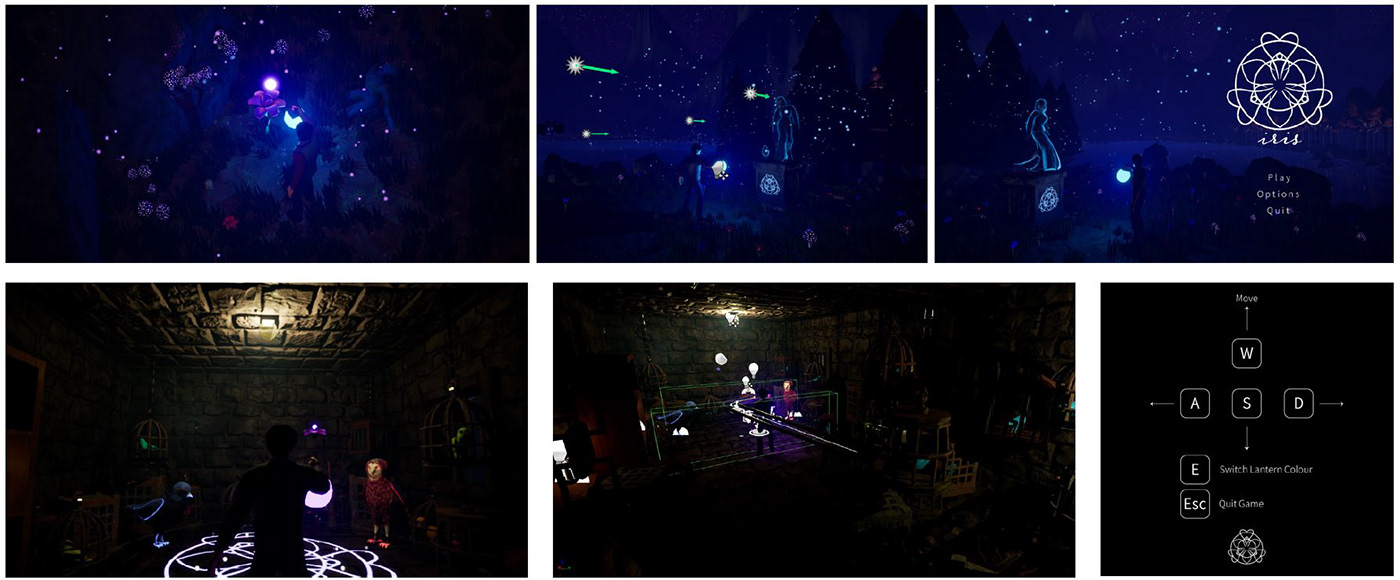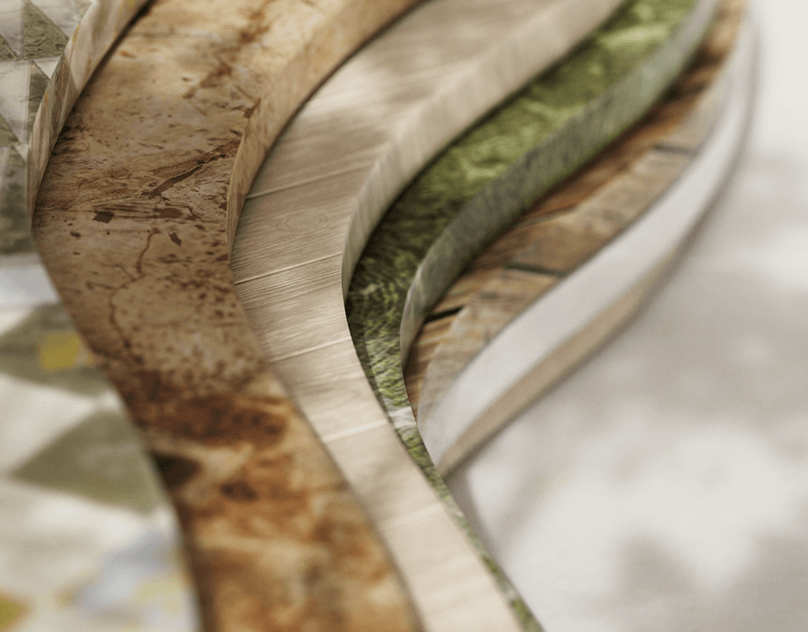
The PC game Iris was built for a Game Design module, as part of the MSc Design and Digital Media program at the University of Edinburgh. It is a 3rd person exploratory fantasy game that examines the concept of binary/oppositional representation within the framework of the ‘Jorinda and Jorindel’ fairytale by the Brothers Grimm. This concept is depicted with the help of a blue and red version of a forest which the player/shepherd (Jorindel) explores and can toggle between. The aim is to find a neutral/third perspective to enter the purple level and gain access to the castle. The software used was Maya, Substance Painter, Adobe Photoshop/Illustrator, and Unreal Engine 4.26.
Video showing the main menu and beginning of the game
The game is a quest to metaphorically find neutrality/the third perspective surrounding the three characters within the story’s context. Narratology was employed indirectly to reveal facets of the story through non-linear intuitive exploration of the environment. The ‘Mise-en-scene’ tells the story with the environment, transitions, characters, lighting, and objects acting as the narrative agents. Short rhymes were created that serve as guidance and offer clues to the story revealed through the game-play. Several games like ‘Dear Esther’ and ‘Ori and the Blind Forest’ were inspirations behind the game.

The main focus was to create an aesthetically driven game, with emphasis on spatial design, lighting, and environmental storytelling. A low-poly visual style was used in conjunction with a darker aesthetic. All the models were textured in Substance Painter and detail was added to the models to suit the visual style. Multiple versions of textures were created for the same models so that they could be used modularly and enabled the use of dynamic material instances. Some images of the models, development, and renders are below.








The environment was developed by populating it with objects and foliage. The setting of the game is the same as the story, as the gloomy forest and castle set a strong foundation for the environment. The lighting of the lantern in the three versions shows how colour can change the mood of an environment. In the purple environment, the same terrain was used but was adjusted with slightly different foliage, fog and post-processing effects. Spatial tension and interest were created in the castle with the use of modular models. The statues of the stone men served as landmarks for player guidance along with particle effects and colour. Several particle effects and billboards were developed. Collision was set up so that the player cannot veer off the path.

The otherworldliness of the environment was highlighted and the use of emissives, fog and lighting set the mood. Dynamic lighting with a change of day setting is also an element of the original story that was brought into the game. In Unreal Engine, several master materials were created that enabled fine control over the textures through Material Instances. The custom glowing shader, water shader and sky material are examples.





The logo was used in the game extensively to show areas of interest through billboards, textures and decals. It was designed as a play on both the iris flower and eyesight. Fonts were also experimented with for the logo and text within the game.

The gameplay was planned to create a game that relied largely on telling a story while still offering interesting gameplay. Game mechanics played a crucial role in the narrative and were developed using Unreal Engine’s blueprint system. The concept of the game hinged on the game mechanics of switching between the red and blue levels seamlessly. The main objects of interest in the game were designed to reveal more about the story and also trigger the game's progression.

Two versions of the character were textured for the red/blue and purple level. The character was rigged and animated using Adobe’s mixamo. An animation blueprint for the character with blend modes had to be created. Additionally, a socket was added for the attachment of the lantern using the character blueprint. This was set up using Unreal’s inbuilt Third Person blueprint. The field of view and position of the camera was adjusted to give it a more stylized look. The same model was additionally textured as a statue and animated with static poses to create the statues of the men in the forest.

Cinematics were created for transitions between the levels and the ending using cinematic cameras with spline and crane setups. The sound was not the main focus of this project and was added in on account of user feedback and to increase immersion. Environmental sounds and effects such as footsteps were included.
In addition to this the main menu was created using the widget interface. The approach was a very minimal design overlaid over a cinematic. Player guidance was given through a fade screen.

The game met its overall goals, with the main focus being on creating a uniform aesthetic throughout that invoked the game concept. This project was a good exercise in texturing, stylization and environment design.








